Radial Clearance
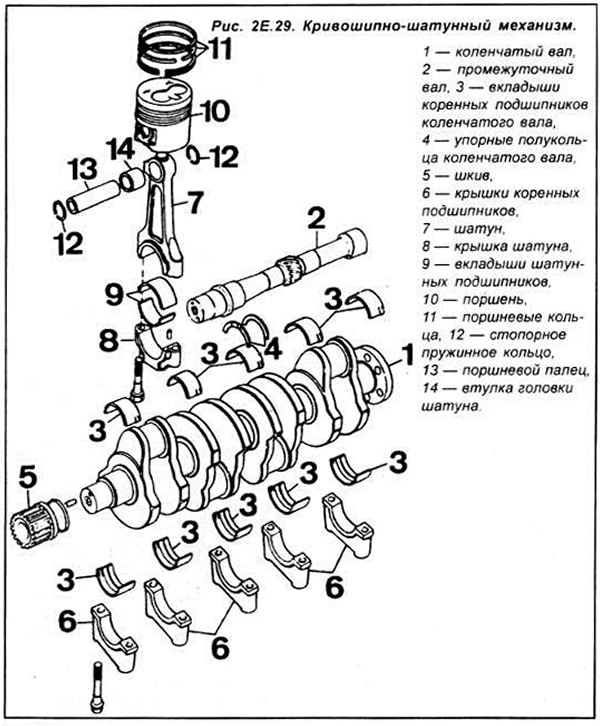
The radial clearance in the main and connecting rod bearings of the crankshaft is measured using special Plastigage measuring rods made of artificial material (main or connecting rod) and clamped in the bearing is subjected to flattening. The radial clearance in a bearing can be determined (on the basis of the corresponding scale, on the packaging of the measuring rods) depending on the width of the deformed rod (see fig. 2E.30).
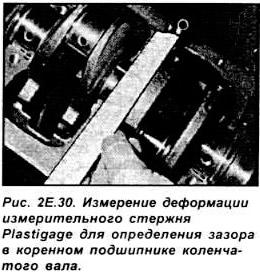
Measuring conditions with Plastigage measuring rods:
- necks and liners must be dry and thoroughly degreased;
- the crankshaft must not change its position during the installation and removal of the measuring rods;
- the measuring rod must be laid in half of the liner, at a greater distance from the oil hole in the liner or shaft neck;
- bearing caps must be installed by hand, and their bolts must be tightened to the appropriate torque: caps must not be struck;
- tighten only the bearing cap in which the radial clearance is measured; it is impossible to simultaneously measure the clearances in all main bearings.
Install the shells on the main bearings in the engine block, and install the crankshaft into them.
Attention. Inserts of the first main bearing (from the drive side of the gas distribution system) are larger than the rest of the bearings and both have an oil groove (see fig. 2E.31) In the remaining bearings, the liners on the side of the cylinder block have an oil groove, and on the side of the cover they have a smooth surface.
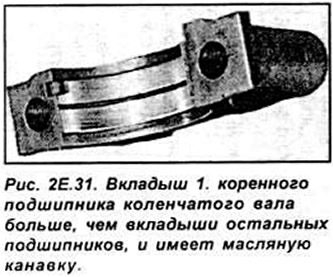
Place the Plastigage dipstick on the first main journal.
Establish a cover of the main bearing together with the loose leaf and tighten bolts of fastening the corresponding moment.
Carefully remove the bearing cover and use the scale supplied with the measuring rods to measure the width of the deformed measuring rod and, based on the table or graph, determine the radial clearance in the bearing.
Compare the measured value with the desired clearance. If the measured gap exceeds the allowable value, repair inserts should be used.
In the same way, measure the clearance in the remaining main and connecting rod bearings.
Axial clearance
After installing the crankshaft in the cylinder block, install the thrust half rings of the crankshaft (oil grooves must be directed outward of the main bearing - fig. 2E.32). bearing caps and tighten them to the correct torque.
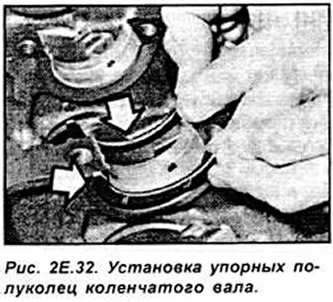
Install the measuring tip of the dial indicator on the end of the crankshaft and measure its axial clearance (see fig. 2E.33).
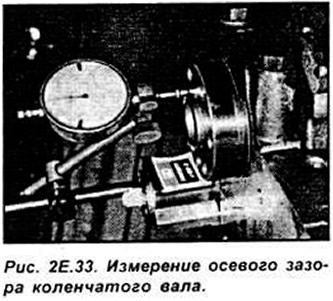
Compare the measured values with the required values. If the gap exceeds the permissible value, then repair thrust half-rings of a correspondingly larger thickness should be used.
Visitor comments